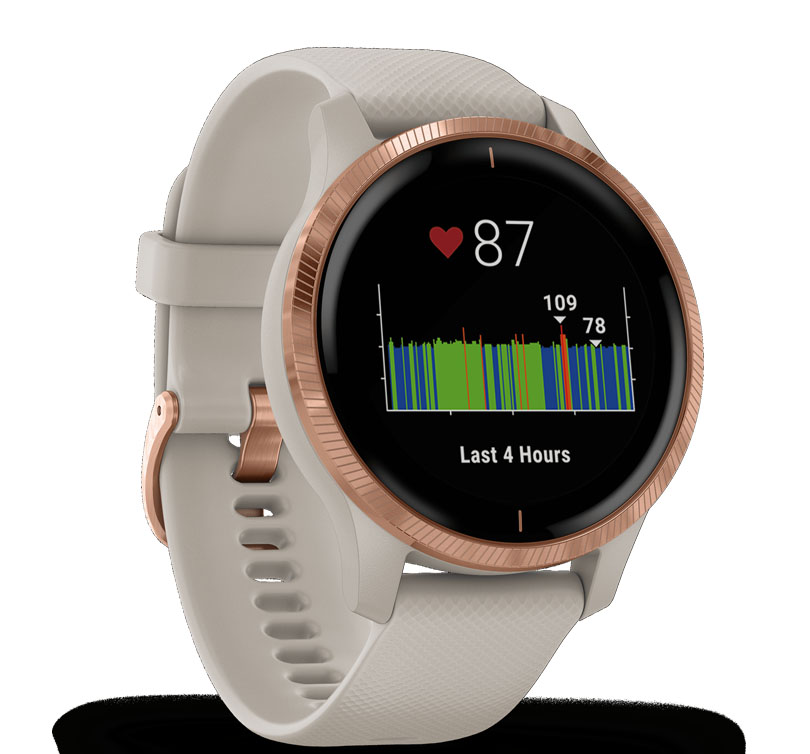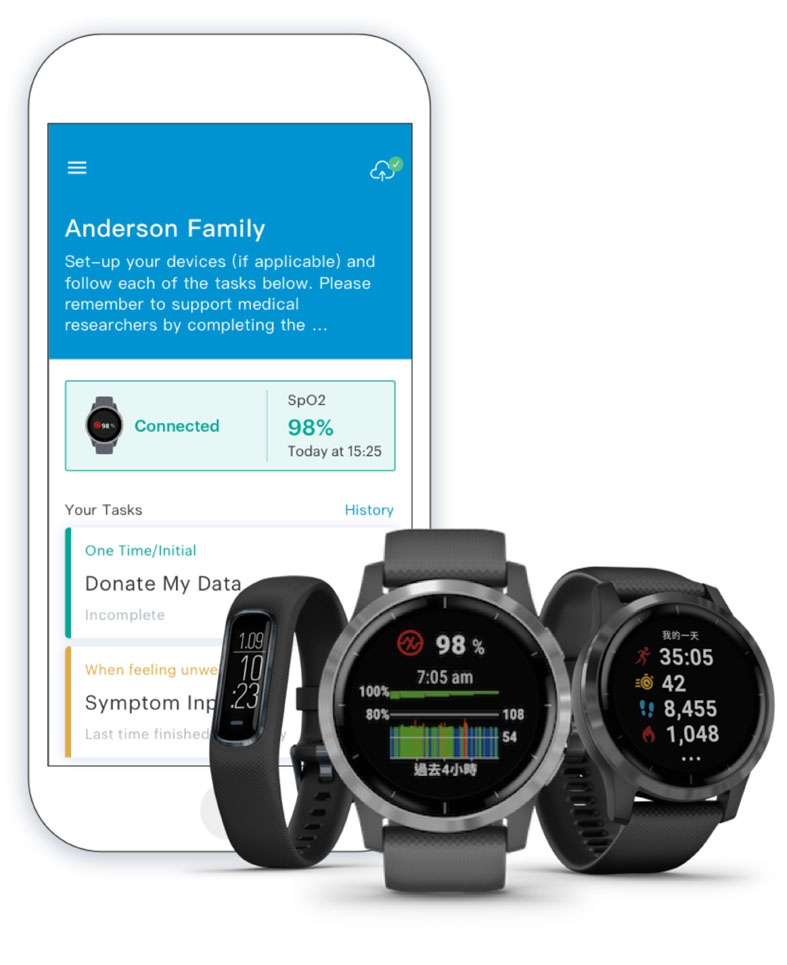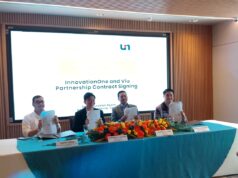Smartwatches – a game changer in the future of preventive healthcare?
With Garmin smartwatches, you can actively track your family’s vital signs on PhysioQ’s self-monitoring app
Our bodies can show indications of health through vital signs such as blood oxygen saturation, respiration rate, and heart rate, among others.
Oxygen saturation, also known as SpO2, refers to the extent to which hemoglobin is saturated with oxygen. The ideal blood oxygen saturation level should be around 95% to 100%. SpO2 is considered a critical indicator, since any level lower than 95% may compromise organ function.
The respiration rate, meanwhile, is the number of breaths a person takes per minute. A normal respiration rate for a resting adult ranges from 12 to 20 breaths per minute, and this rate changes depending on activity levels. Changes in respiratory rate are seen to indicate a possible deterioration much sooner than changes in other vital signs.
On the other hand, heart rate refers to the number of times the heart beats per minute, and it serves as a key indicator of heart health. The normal rate for healthy adults ranges from 60 to 100 beats per minute, and it changes depending on factors such as exercise, illness, injury, and emotions.
As the world continues to combat coronavirus disease 2019 (COVID-19), staying strong and healthy is crucial; and monitoring vital signs is a very helpful guide for maintaining good health in ourselves and in every member of the family.
Regularly monitoring vital signs gives us real-time insight into each family member’s health status, out of which one can make wiser choices on what to do, what to eat, what to avoid, etc. Also, symptoms and apparent health issues can be determined right away when abnormal vital readings show up. When such complications are recognized, medical treatment can be done just in time.
Monitor vitals with Garmin smartwatches and Neo app

Technology now makes it easier to track someone’s health with the uptrend in wearables and tracking applications. Garmin wearables can consistently track these critical health data which will provide insights to one’s health, allow for data collection throughout the day, which is vastly different from conventional data
that are all collected in the hospital. The main advantages of these are that the information from this collected data are completely missing from most research focuses on information such as natural cycles and rhythms (circadian, ultradian, etc.).
“I think it’s it is a game-changer to have an oxygen sensor while at home, using a wearable device that is affordable” said Dr. Andrew Cei Ahn, M.D., assistant professor of Radiology Harvard Medical Faculty Physicians.
Among the numerous firms making this possible is PhysioQ, a non-profit organization that provides affordable and easy to learn research tools, allowing anyone—from academic researchers to everyday citizens—to conduct health (physiological) research and further their passion for health science.
In fact, data from PhysioQ has been used by researchers in top institutions, including Harvard University, Berkeley University, Boston University, McGill University, Massachusetts General Hospital Research Institute, to name a few.
PhysioQ recently launched a connected self-monitoring system called Neo, which allows families to proactively monitor their health right from their smartphones. Through Garmin’s exclusive partnership with PhysioQ, smartwatches from Garmin can connect data gathered from users can be synced to Neo’s self-monitoring system, and users can proactively monitor their own and their family members’ vitals through the Neo mobile app free of charge for Android and iOS.
Garmin smartwatches compatible with Neo:
• vivosmart 4
• vivomove 3
• vivoactive 4
• Venu
• fenix 5X+
• Fenix 6
• Forerunner 245/245 Music
• Forerunner 945
• Abrbrroach S62
Help researchers combat COVID-19 with healthdata from Garmin wearables

While Garmin users can actively monitor their health through the Neo platform, they can also opt to contribute their data for research on COVID-19. Vital readings can be used by medical professionals as they still try to understand the implications and effects of the disease.
Among patients suffering from COVID-19, oxygen saturation is found to have dropped below 93%. Their respiration rates have been monitored to go up to 30 breaths per minute, above the normal rate. Changes in heart rate, meanwhile, have been shown to be useful in early detection of the disease.
By contributing their data, which will be anonymized nevertheless, users can help medical researchers in understanding this disease and how it can be combated.
“Changes in trend data, especially related to oxygenation (reduction in oxygenation for some, especially associated with activity and even sleep), respiration (increase in respiration rate) and heart rate (increase in resting heart rate) are all things associated with the COVID-19 patients I have treated. Although it is important to note that these signs don’t necessarily mean a COVID-19 diagnosis, but they are things to note and be aware of.We believe the insights gained from health data from Garmin smartwatches can change our clinical approach and significantly expedite our disease discovery process. This initiative will not only benefit us today, but will also prepare us for the future.,” Dr. Andrew Cei Ahn, MD, MPH, assistant professor of medicine and radiology at Harvard Medical School, said.
Consumers can sign up at physioq.org/neo?PH-PROMO and Garmin will offer a 10% discount on any purchase of PhysioQ-compatible smartwatches on kinetic.com.ph/collections/garmin-x-physioq and will donate 5% of the sales to PhysioQ’s research on COVID-19.
With Garmin smartwatches, together with PhysioQ’s Neo app, families can take care of each other’s health better, and they can help medical researches beat COVID-19 as well. Like Garmin Philippines on Facebook at www.facebook.com/garminphilippines. For more information about Neo, visit www.physioq.org/neo.



